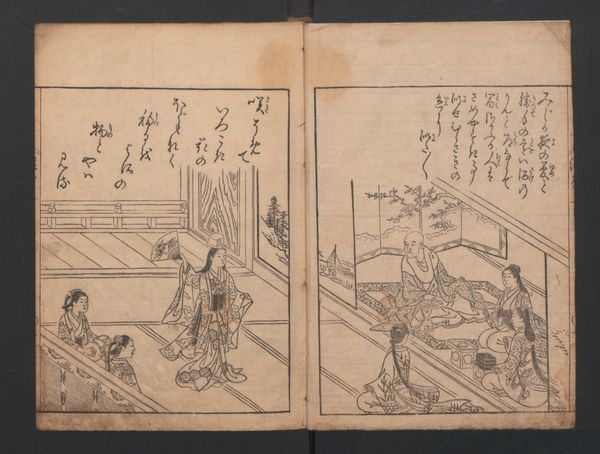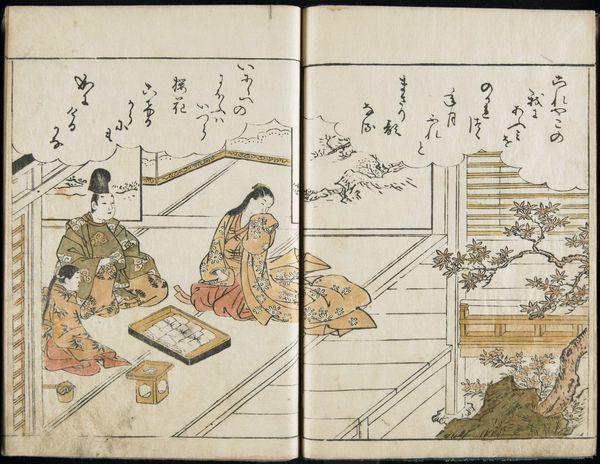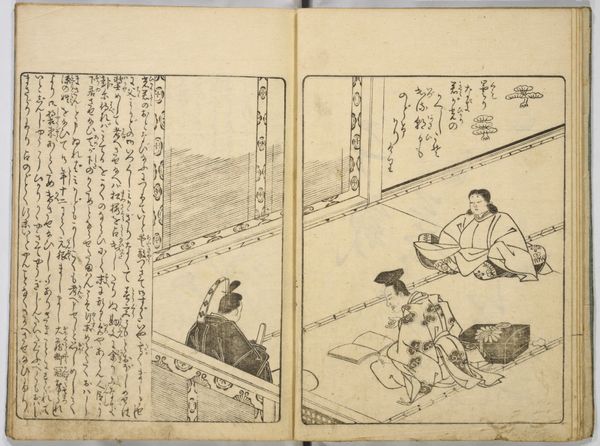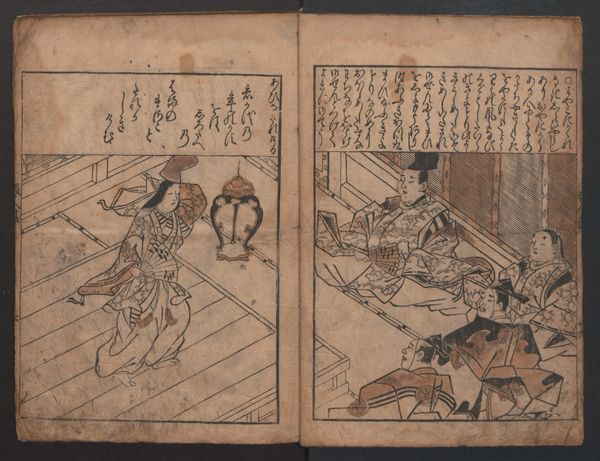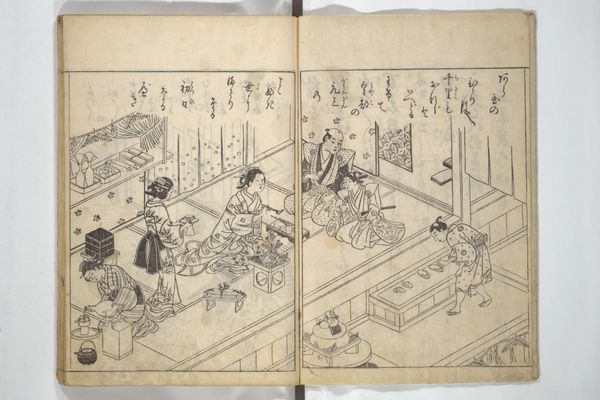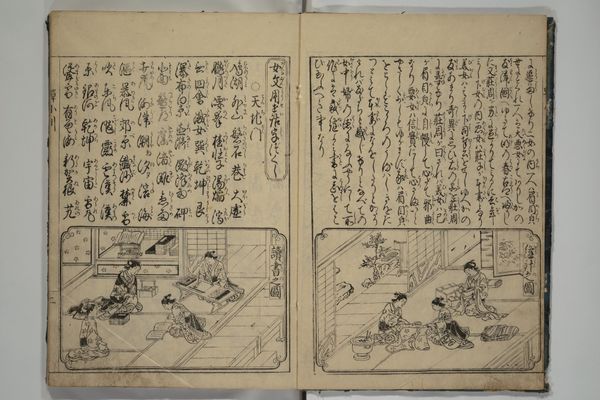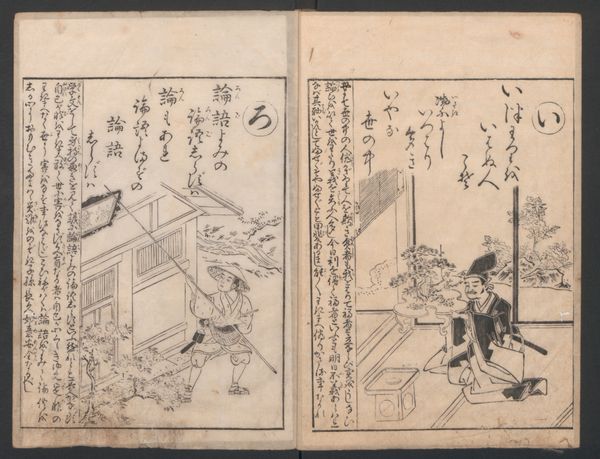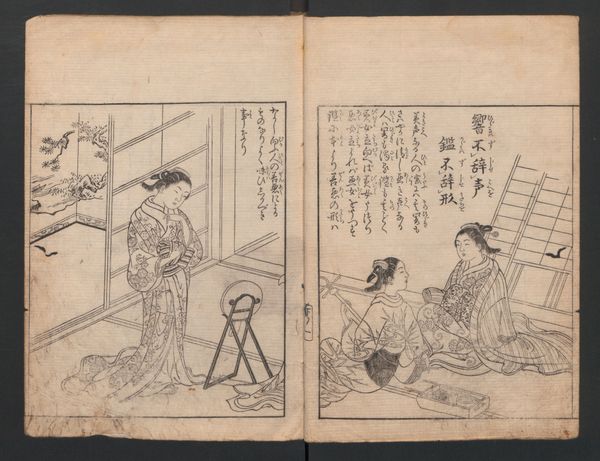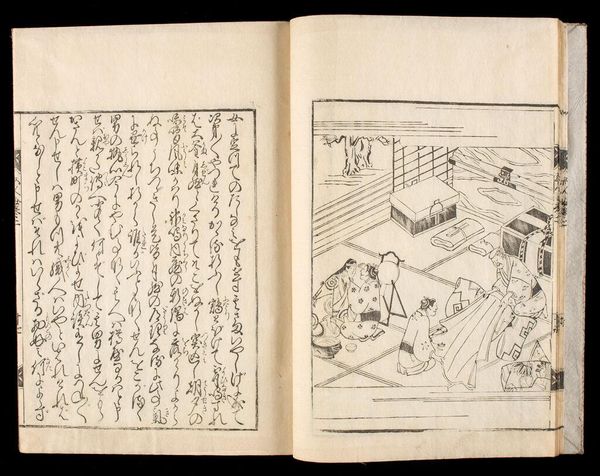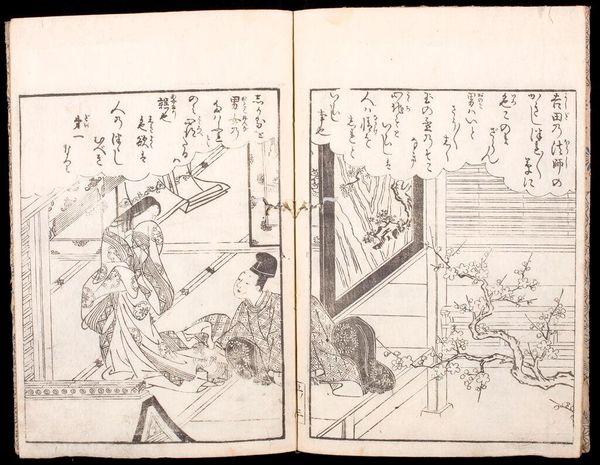
Compendium of Yamato-e Painting Themes (Yamato-e zukushi) 1686
0:00
0:00
drawing, paper, ink
#
drawing
#
aged paper
#
toned paper
#
book binding
#
narrative-art
#
book
#
asian-art
#
sketch book
#
japan
#
paper
#
personal sketchbook
#
ink
#
pen-ink sketch
#
men
#
pen work
#
sketchbook drawing
#
genre-painting
#
storyboard and sketchbook work
#
sketchbook art
#
yamato-e
Dimensions: 10 3/4 x 7 3/8 in. (27.3 x 18.7 cm)
Copyright: Public Domain
This is a page from Hishikawa Moronobu’s woodblock-printed book, Compendium of Yamato-e Painting Themes, made in Japan in the late 17th century. Notice the figures within depicted in intimate domestic settings. On the left, men engage in refined pursuits like reading and conversation, while on the right, a woman is shown absorbed in preparing something, perhaps tea. The fan, prominently displayed, is a symbol of status and refinement. It’s held by a seated man, subtly communicating his social standing and cultivated tastes. This motif echoes across centuries. Think of Renaissance portraits where the subject holds a book or a globe – objects symbolizing intellect and power. These objects evolve, yet the underlying impulse to project an image of authority and sophistication remains. Consider the repetition of these motifs, how they resurface, evolve, and take on new meanings in different historical contexts. It is not a linear progression but a cyclical one, where images are continually reinterpreted and imbued with new significance.
Comments
No comments
Be the first to comment and join the conversation on the ultimate creative platform.

